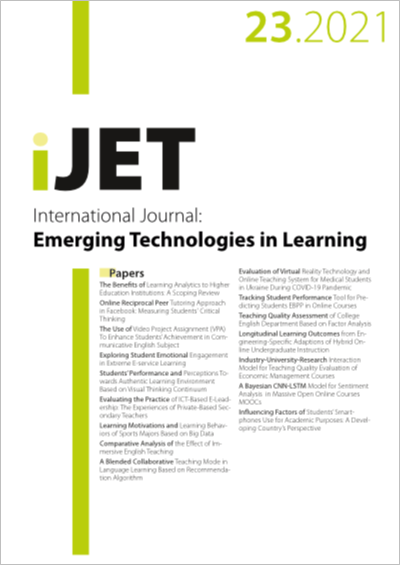Using Technology Acceptance Model to Discuss Factors in Distance Learning Behavior
DOI:
https://doi.org/10.3991/ijet.v18i21.43919Keywords:
Technology Acceptance Model, distance learning, learning behavior, system quality, information qualityAbstract
Due to the COVID-19 pandemic, distance learning is required during school closures and group classes for students’ continuous education during quarantine. There are various distance learning platforms, each with distinct characteristics, whose functions are unknown. The application of the technology acceptance model (TAM) to discuss distance learning behavior is therefore studied. University students in Taiwan took part in this research. In total, 450 copies were prepared from the questionnaire to implement in the sample. The invalid and incomplete forms were removed, and in total, 364 copies were subjected to the data analysis. The valid forms’ ratio was found to be 81%. The research results are summarized below. 1. Students consider the user-friendliness of distance education to be the system design, response time, and display being simple and convenient with a fast response and few mistakes. 2. The impact of information value on perceived user friendliness explains that distance learning with correct, conforming to needs, complete, and real-time information could have students consider the ease of use of distance learning. 3. For students, distance learning is helpful for learning or easy to operate, as they would enjoy using it and further enhance their willingness to continuously use it. According to the results of the proposed discussions, it is expected to help teachers, when using digital technologies for teaching, successfully apply media to enrich traditional teaching environments and integrate various resources to achieve effective learning.
Downloads
Published
How to Cite
Issue
Section
License
Copyright (c) 2023 Chich-Jen Shieh (Submitter); Meng-Dar Shieh Shieh, Hsin-Yin Hsieh

This work is licensed under a Creative Commons Attribution 4.0 International License.



